As I started the Wasatch 100, with a climb up Bair Canyon, a 4500 foot ascent, I thought how a week earlier I was sitting in the emergency room with symptoms of a heart attack. Strong chest pains. Heavy arms. Yet here I was beginning a 100 mile race.
It’s probably best to start back 9 months ago. It was early January. Yet again I had not won the Hardrock 100 lottery – a feat almost more challenging than actually running the Hardrock 100. I had no race plans for the year. Wasn’t even that interested in a 100 miler. So, on a whim, I threw my name into the Wasatch 100 lottery. It’s one of the oldest 100 mile trail races in the US. It’s a volunteer-run, old-school race on a tough course. The finish rate is usually around 55%. I figured there’d be no chance my name would be picked since it was my first year applying. (You usually get more lottery tickets with each successive year of applying). So I wrote the race off. Won’t happen.
January, 27th – I’m driving to St. Paul with my daughter to bring her back to college. I’m also trying to watch the livestream of the Wasatch 100 lottery. It was two guys drawing names outta a basket who can’t get the audio to work. So they are trying to show the names to the camera. It’s almost comedic. I give up while driving. Not worth the hassle. Besides it’s not gonna happen for me.
Later that evening I check the runner list at my parents’ house in St Paul. I announce out loud, “Oh shit!” I’m in! So exciting! So scary!
Did I want to run the Wasatch 100? I guess. 100 mile races are the pinnacle of ultra running. I do like to notch those achievements. The race does have a cache. Somewhat hard to get into. Very hard to finish. It is a Hardrock 100 qualifier. But did I want it deep inside me? In my heart? I’m not sure.
Yet, the race propelled plans. In a good way. Much of the joy of running 100s is the planning. I made training plans for June in Wyoming. Running in Wyoming was amazing. I did a nice 30 mile day over the top of the Bighorns that was absolute fun! I made plans for a week in Utah. A state my wife has never been too, so she was excited. I needed 8 hours of volunteer trail work. So I headed up to Lake Superior to help out on the Superior Hiking Trail in July. I was executing a plan and building energy for the Wasatch 100.
And yet I was leaking energy. I shared the fact that I was in the Wasatch 100 with too many people. I told folks at work so I could plan for time off (I work with a number of talented athletes). I told my family of course. Friends in the Capital Striders running group. Locals at Zanzibar’s coffee. Adding risk to the project.
I know, I know, many out there says that sharing your goals with others will help you achieve them. As you share your goals those around you hold you accountable. They will help you out.
But I’m probably more in Derek Siver’s camp, who said you should keep your goals to yourself. This is especially true for ultramarathoning. Every person I told would give me a funny look when I told them I was doing the Wasatch 100. Then they would say something like, “I once ran a 5K.” They basically look at you like you’re a freak. Sapping bits of energy from you because they can’t fathom it.
Ultrarunner Hillary Allen talks about “Guarding the Psyche” in a video for Brooks. She knows it takes tremendous amounts of mental and emotional energy to keep going through the bottomless lows of an ultra. So she works hard to surround herself with motivating vistas and positive people.
So jump ahead to August. I’m 3 weeks out from the race. I decided that my Sunday run would be my last real long run. After that run I felt a little pain and pressure in my chest. But it didn’t worry me too much. I’ve had feelings like that before – especially after Covid. It would usually go away. I was ready to do no real running at this point. Just my normal Thursday early morning runs. A run that is so hard for me to turn off. A pattern etched in over years.
That Sunday night my daughter, who is gearing up for her senior XC season, tells me she wants to run 15 miles before official practice begins. Like tomorrow. Monday. I said fine, but we’d have to start really early – like 6am. She was game. So on Monday I went out for an early morning 15-miler with my 17-year-old daughter. It was thoroughly enjoyable. A nice pace. Lots of singletrack. Even to the point where we got tired of Denman’s Woods. Now I was really done running longer distances!
But my chest was not getting any better. In some ways it felt worse. Interestingly, not worse when running. I ignored it. In fact I distracted myself. I worked a lot in that last week. Coming home after 7 pm. Continuing to work on the weekend. Work was a welcome activity I had some control over.
It’s the last Thursday-morning run before traveling on Labor Day. (Truly the last – I know, I know.) It’s a classically super-humid morning in Des Moines. The run is mostly fine. Not good. But not bad. I feel a little sluggish around mile 6. But then I get to Zanzibar’s and start chatting with the regulars while waiting for my bagel. I have to break the conversation and go outside to sit down. I feel faint and dizzy. Not well.
I recover after sitting outside. Go back in and get my bagel. Then head home. I’m not much for conversation as a panic sets in over me. I’m not sure what to do.
I go about my day worrying about the race. It’s a week away. That night as I go to sleep I feel my arms getting heavier as my chest feels more painful. I wake up every two hours. I lie awake for 30 minutes each time. Nothing is feeling any better. What is going on?
The next morning I resolve to go to the emergency room. So Heather and I head to Mercy at 8 am. A perfect time because it’s totally empty! They get me in immediately. I get an EKG and blood pressure taken and they send me back to a room. The nurse suggests that I put on a gown top so they can attach a heart monitor and such. The device measure heart rate, respiratory rate, and pulse oxygen levels. The doctor comes in. His name is Dr. Sweet. He asks about what is happening and I explain the chest pain that I’ve been having for 2 weeks. He then gives his “ER chest pain” speech as he calls it. He explains that he can look for things that might cause death like a heart attack or fluid in the sack around the heart. But if he can rule those out he’ll be limited in what he can do. I understand. I ask him if the EKG looked normal. He said it looks like the EKG of a runner with not much body fat. Nothing to worry about. So we begin the process of drawing blood and getting a chest x-ray. I get an IV. The first time since I was 3! The nurse takes an initial draw of blood. Then we wait for the x-ray technician.
The x-ray technician comes in and he’s about to wheel me on the bed to the x-ray room. I offer to walk. He says he can’t let me do that. But he gets a wheelchair. We head down to the x-ray room and I stand up to get a couple of x-rays of my chest. Then he wheels me back – getting slightly lost on the way.
I then sit and wait. I watch my heart rate. And relax. It drops down to 44. But mostly hovers in the 50s.
The nurse comes back in about 2 hours later and draws some more blood. They want to run the same tests to see how they are trending.
She comes back about an hour later asking if the doctor has been in. I said no. She said he’s had a bit of a “dilemma”. We aren’t sure what that means.
Finally around 1 pm the doctor comes back in. He explains that he had a number of patients who were has unstable conditions. He then said, “Some of them stabilized and one of them is now dead.” Then he went on to explain to me what’s going on with my body. He said he saw no signs of a heart attack or fluid around the heart. Hospitals measure a heart muscle protein called troponin in the blood to determine if someone has had a heart attack. That protein will remain elevated in the blood for up to 3 weeks after a heart attack. He said my levels were normal for someone who runs a lot.
My wife then explained that I was planning to run a 100 mile race in a week. I interjected that I’ve completed 5 of these 100 mile races before. But I am quite nervous about this particular race. He said he saw no reason to skip the race. He said, “As an athlete you know your body and what it can do. I don’t see any medical reason to forgo the race. Listen to your body and act accordingly.”
That was total relief. On all fronts. I’m not having a heart attack. I can still go to Utah and run the Wasatch 100. It’ll all be fine.
I slept much better that night. No chest pain. Best sleep I’ve had in a couple of weeks. I’m still not sure what was going on. But I do feel much better. Time to focus on sleep and packing. How many pairs of shoes should I bring?
Every night’s sleep is more restful. My chest relaxes more and more. It’s time to dig deep and be ready for “100 Miles of Heaven and Hell”.
We arrive in Salt Lake City on Labor Day. We do our grocery shopping in Salt Lake before heading to our condo in Park City.
Park City is hopping! People out and about everywhere. Young and old. Turns out it was Miner’s Day. A festival in Park City celebrating the original impetus for Park City – silver mining!
In general I was feeling pretty relaxed. Maybe too relaxed. Usually the week before a 100-miler I’m a ball of nerves. Usually I’m not very enjoyable to be around as I’m distracted and easily irritated. But most of the week leading up to the Wasatch 100 was kinda chill.
Heather and I hiked around Park City. Ate at Sundance. Shopped on Main St. Overall it felt like a vacation. (Albeit, I did a work call on Tuesday.)
On Thursday I had to have my drop bags ready and go pick up my race number. That was a low-key affair in Salt Lake City. This race is super old-school so you just walk up to a picnic table in Sugar House Park and get your number. Drop off your bags and leave.
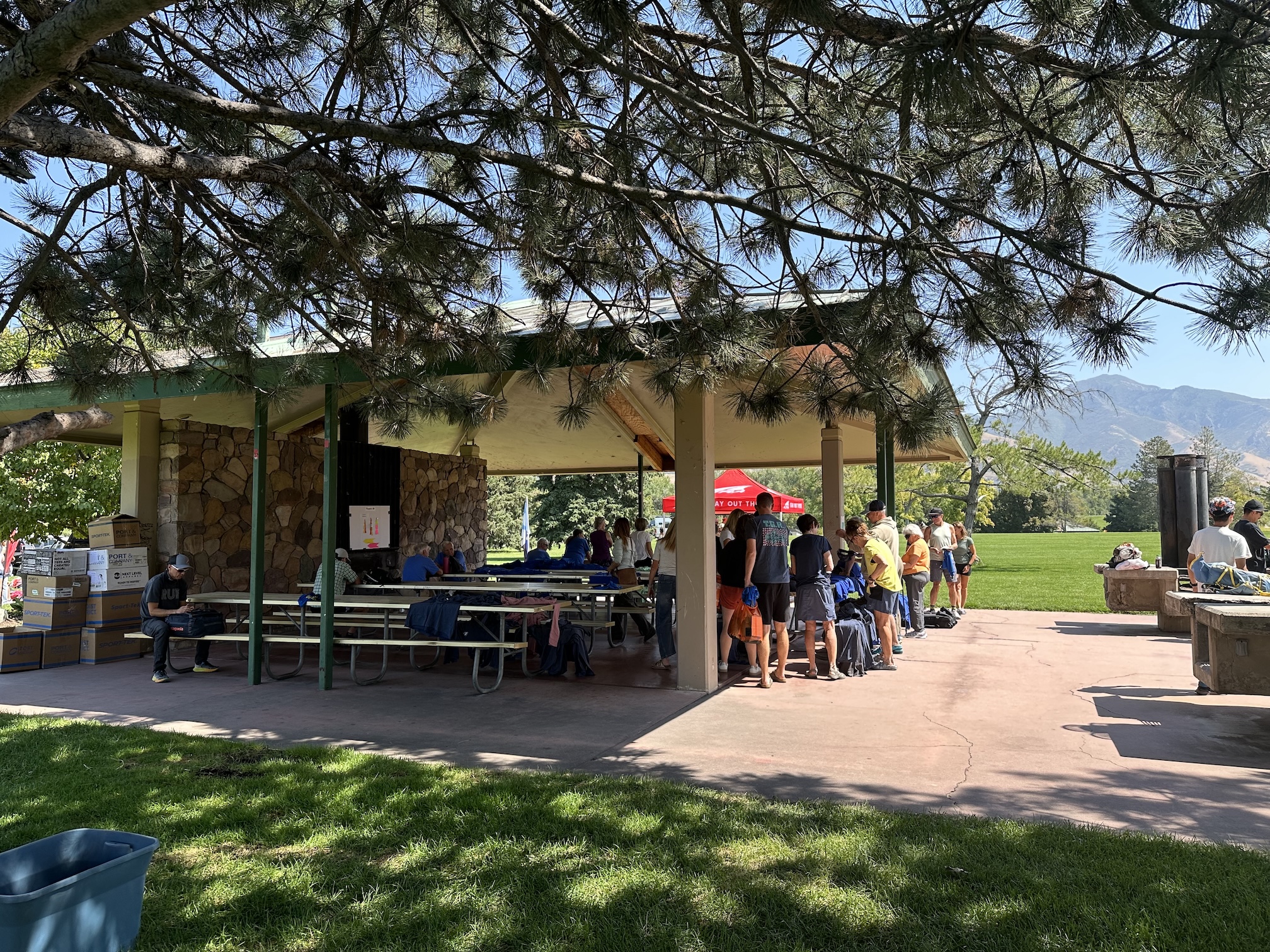
We went to the starting line after picking up my number. I wanted to get a sense of what the start looked like in the daylight. I wanted to know about the parking and generally be comfortable with the plan.
We got the start and it was hot and empty. There was one young runner there checking it out too. He said he had run the whole course back in July as training. We talked about how the first 5 miles is just a conga line up the mountain. No point in trying to pass anyone as you are climbing 1000 feet every mile.
I walked down the first half mile past the start. I was beginning to feel the pain in my chest again. Was the pain a somatic symptom of my stress? I don’t know. I ignored it yet again.
![[gear-ready.jpeg|600]]
The next real hurdle was getting enough sleep before a 3:30 am drive to the start. I went to bed at 7:30 pm. Sleep was mostly pretty easy. I was awakened at 10 pm to my wife talking to my daughter back at home about a defective smoke alarm. I went in the other room to help troubleshoot.
I was able to get back to sleep and woke up at about 2:15 am feeling reasonably refreshed. Made my coffee. Showered. Packed up my bag and we were on the road at 3:30 am heading to Kayesville, Utah about 50 minutes north of Park City.
We arrived at the start at 4:20 am. The parking lot was about 20 percent full. We backed in to a spot. The temperature was a little warm – like 60. But not horrible. I was ready to go. Mostly I was ready to see how I did on the climb up and out of the Salt Lake basin. I told my family that would be my indicator of the race. If I felt fine after hitting 9000+ feet I’d know I’d be fine to keep going.
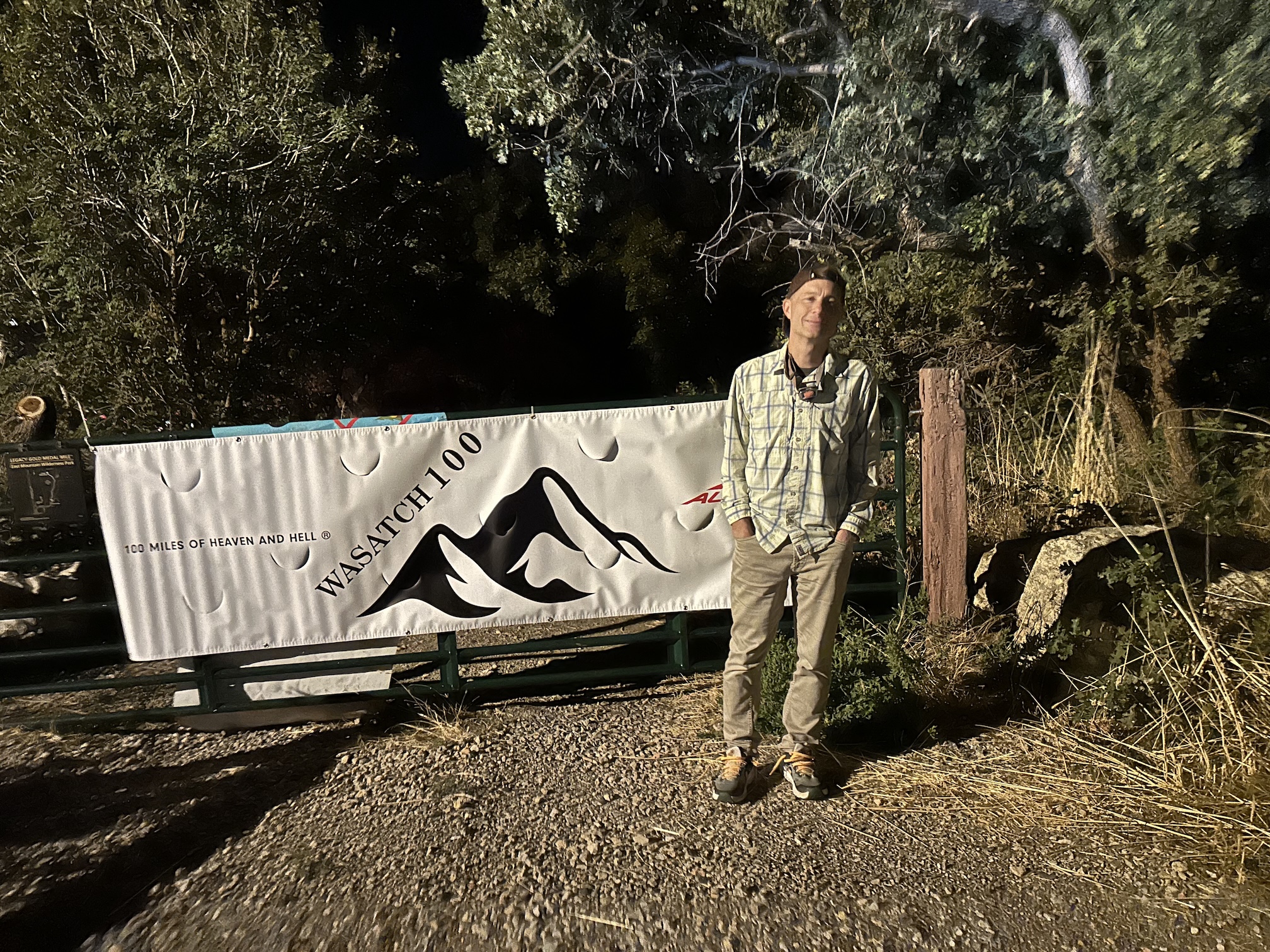
I was now excited to see what the climb was like. I was also excited to make my way to Interstate 80. A road I go under many times in Des Moines as Interstates 80 and 35 intersect there. But I wasn’t sure I was I wanted the full 100 miles.
The start was a classic old-school start. The race director counting down from 10 and then 300 runners all cheered and trotted off into the darkness.
The first half-mile is on a wide patch of trail. Easily accommodating 5-6 runners across. But we quickly hit the single track and there was a back up to move onto that section. You weave above the starting area for a bit. Passing through the Davis County shooting range which has signs about how you might incur fatal or other injuries passing through there at certain times.
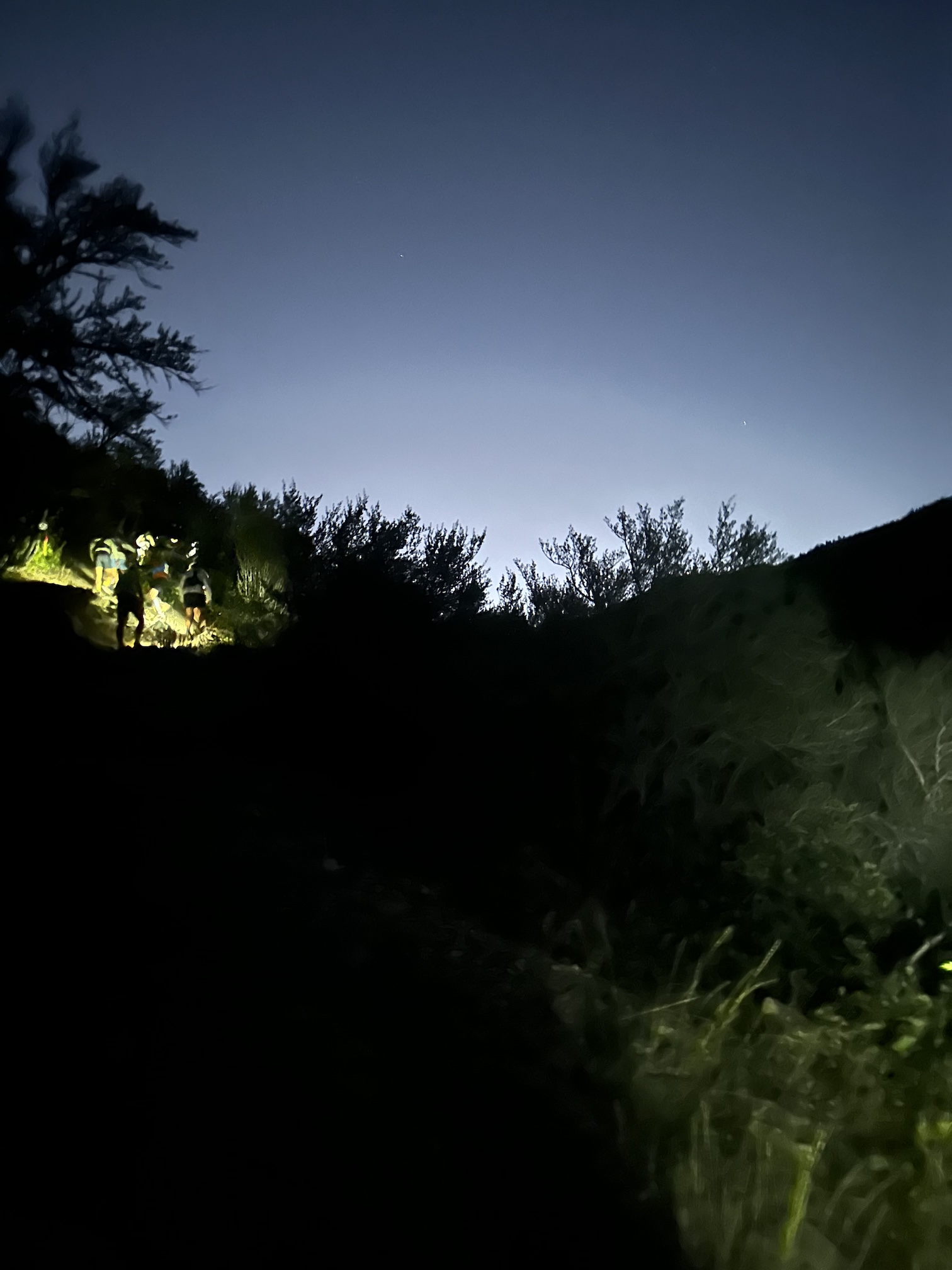
Pace was nice. Maybe 10-12 minute miles. Then we turned upward into Bair Canyon following the creek from about 4800 feet up to over 9000 feet. I was with a group of about 5-6 other runners through here. At one point I was climbing and I noticed that my head was at the same level as the heels of the woman in front me. We were pretty closely bunched at that point. That’s how steep it was.
I stopped to pull out my trekking poles. They are helpful on steep climbs as they shift the weight burden from all legs to legs and arms. Everyone passed by and I was alone. I was worried. Am I at the back of the back? But I kept on moving. Catching up to the group ahead of me.
The last sections get insanely steep. Mile 5 took 34 minutes with the incline being roughly 25%.
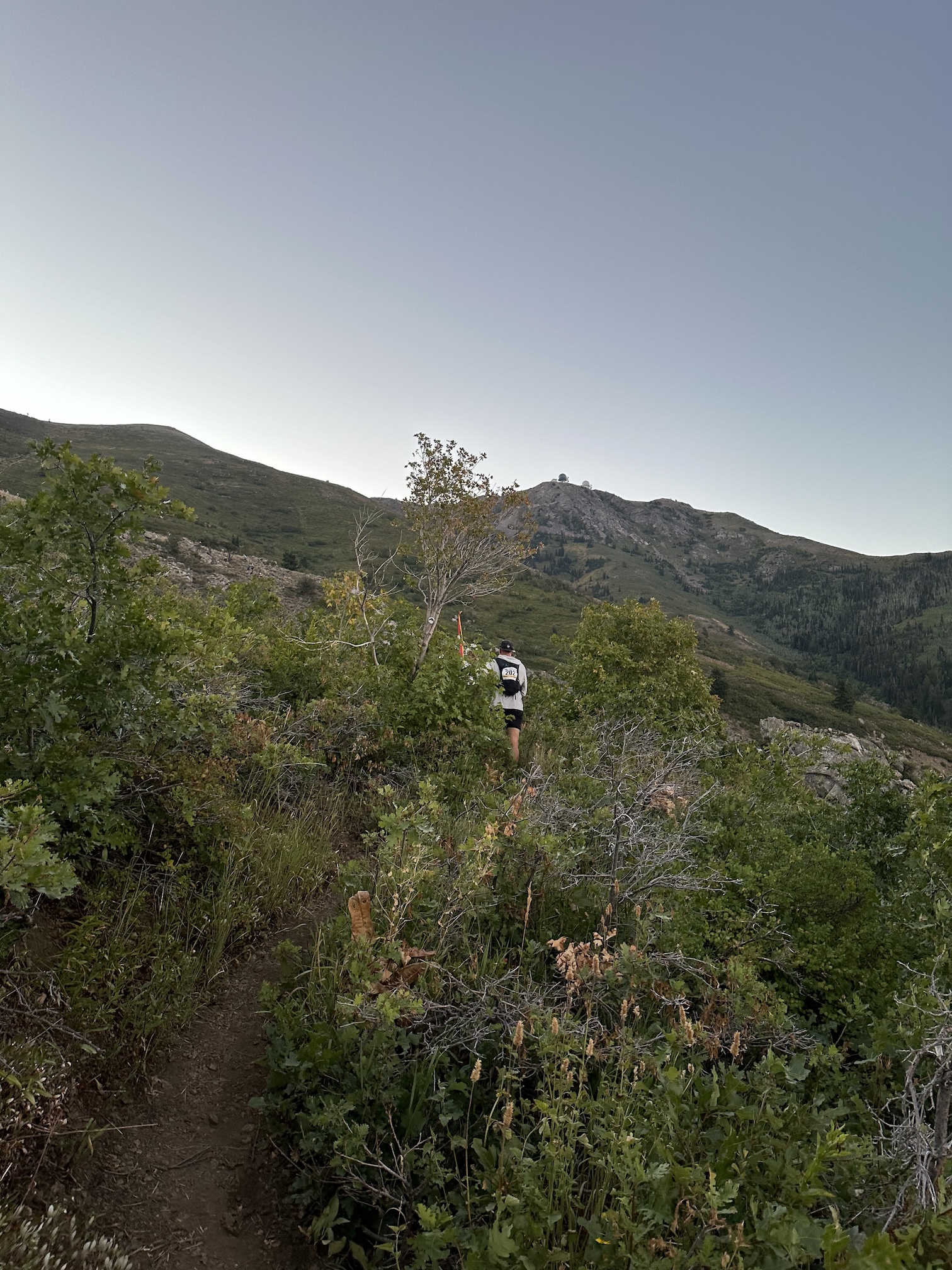
People around me talked about other ultras they’d done. Some had done Leadville – which had quite a reputation this year as being too crowded. As we finally cleared the creek bed and were on the open ridge I could look back. For a while I didn’t see anyone behind me. I still thought I was at the very back.
Finally I looked back and about half a mile back I saw a huge conga line of about 100 runners. That felt good knowing I wasn’t the last person up the hill.
We got to the top and I felt fine. No chest pain. Not too much sweat. It was going quite well!
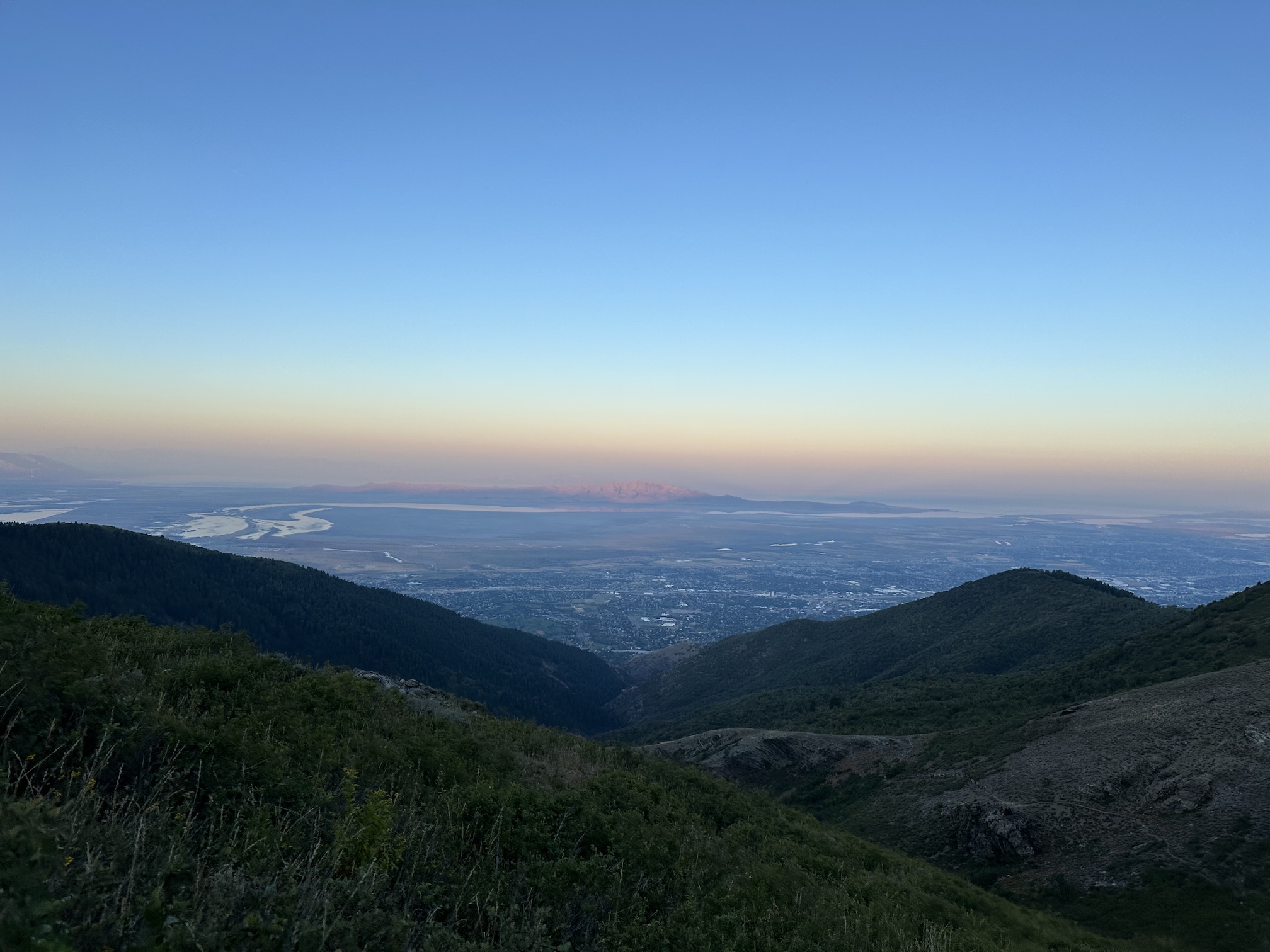
Once you hit the top it’s transitions to a nice ATV trail for a while. Mostly downhill. It felt great! So good that I FaceTimed Heather to chat. There’s amazing mobile phone coverage along most of this race. Very different than the Bighorn 100 where there’s basically none.
I clocked in an 8:47 mile at one point. Maybe a little too fast. But it felt good to enjoy the downward pull of gravity. Making it easy to run.
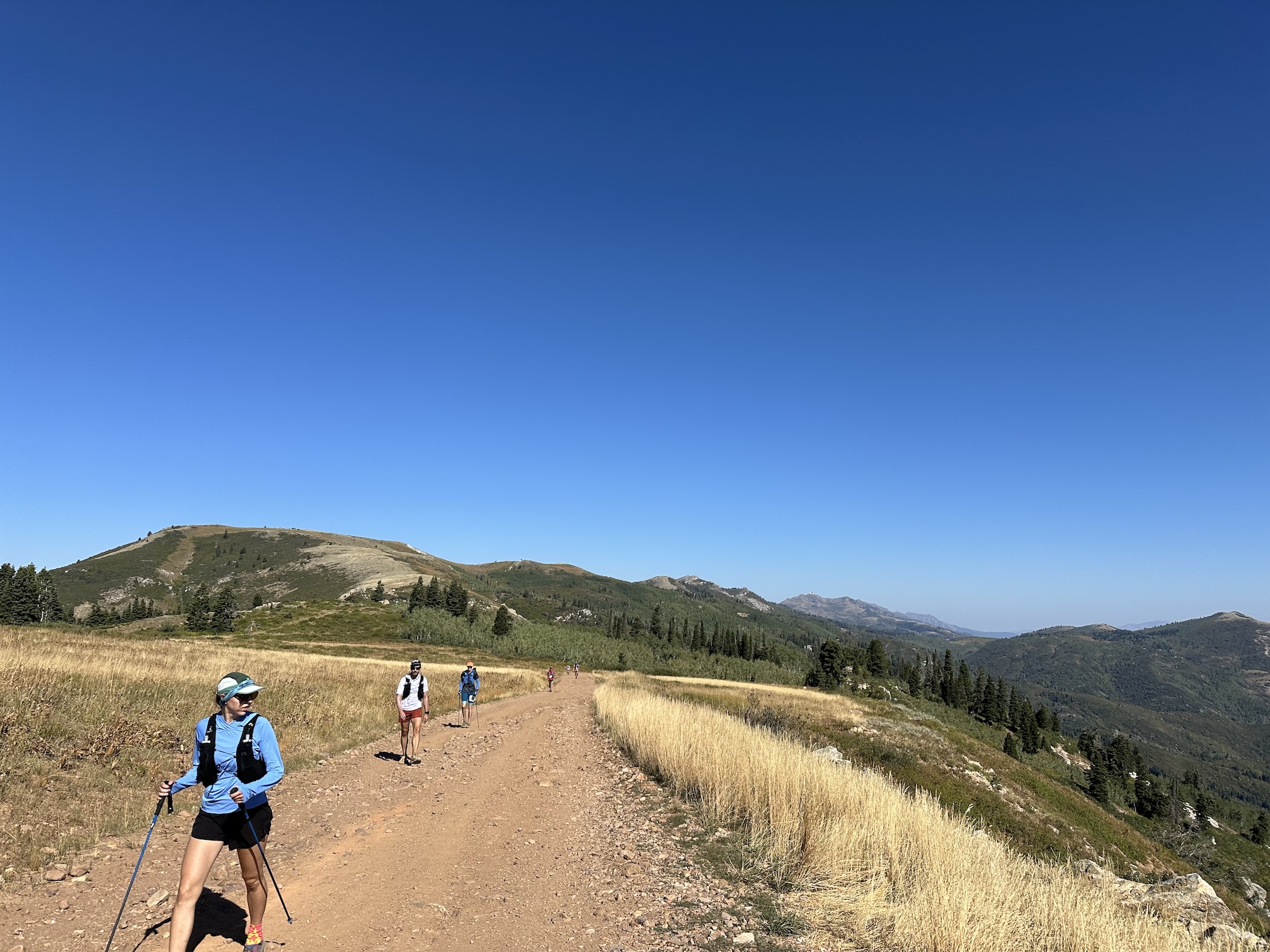
I picked up a little water at Grobbin’s Water Stop at mile 11.5. I wasn’t too low on water since it had been dark and relatively cool. It was now 5 miles to first real aid station. I rolled along with ease hitting the Bountiful B aid station almost exactly on time according to my schedule. I switched shirts to a tank top which was in my drop bag. Got some more water and enjoyed the vibe. The music was pumping and the “Bountiful Brides and Bachelorettes” were full of energy and all wearing pink.
The next aid station was only 4.3 miles away. That would be an easy leg. I arrived into Sessions Lift Off feeling fine. I got plenty of water. Had a little Mountain Dew and was ready to leave. As I headed out a volunteer offered to put sunscreen on me. Probably a good idea since I had switched from a t-shirt to a tank top at Bountiful B. He sprayed my arms and neck. I probably should’ve had him spray my chest as my tank top was kinda low cut!
I left there knowing the next leg was 11 miles. Which is quite a slog. Most of it right near 9000 feet.
There were two 500 foot climbs up to above 9000 feet in the middle of this section. And they were tough. I slowed to a crawl on them. People passing me each time. I was having a hard time getting enough oxygen. I was breathing deeply and quickly. To the point that my diaphragm got worn out. It felt like doing a 200 sit ups in quick succession. My lower abdomen couldn’t keep up during each climb. But I felt strong on the descents. Passing people on each downhill only to be passed by them on the next climb.
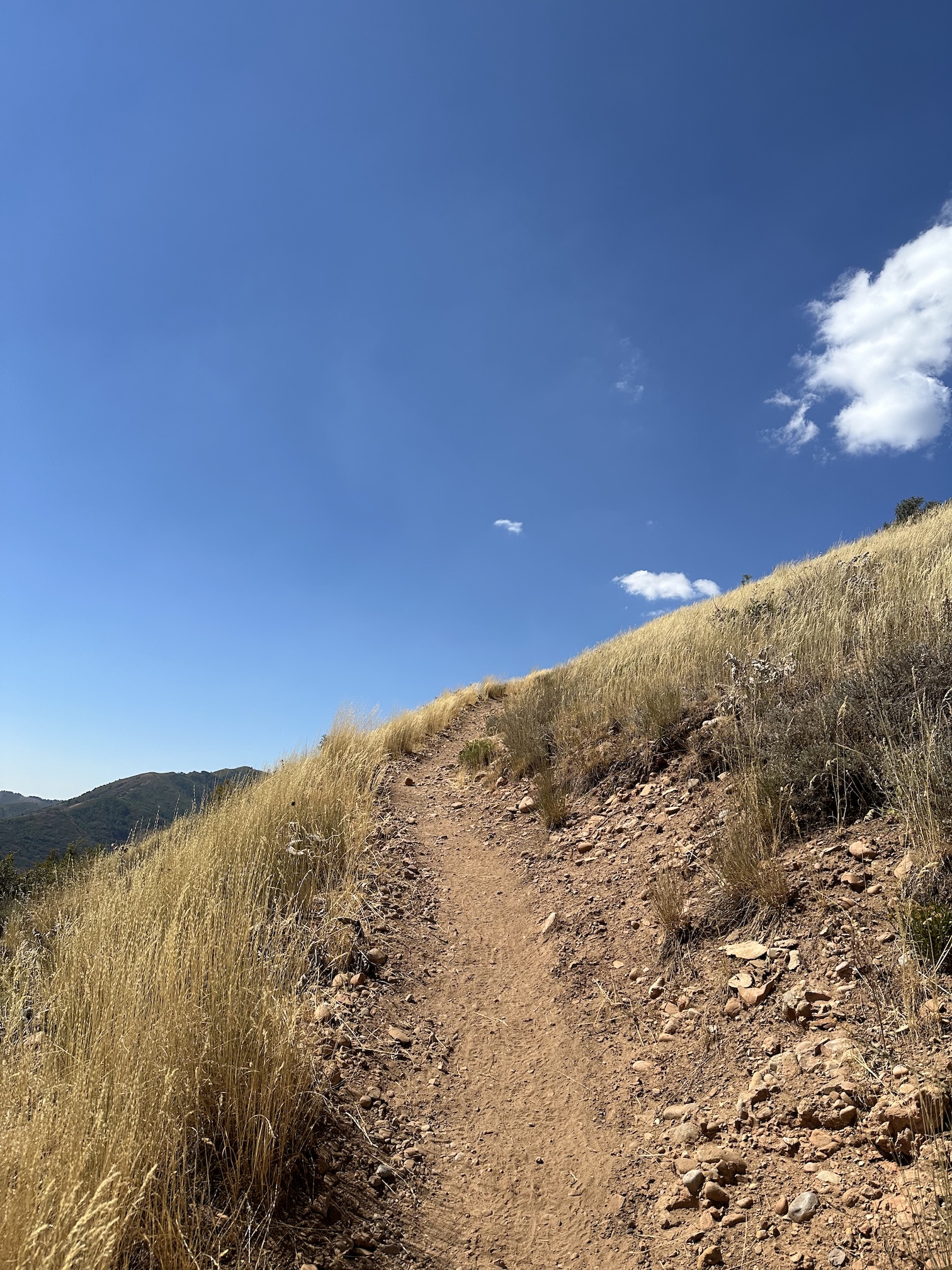
I made it through the 11 mile section almost out of water. I was carrying 2.5 liters. But I drank almost all of it. It wasn’t super hot but the dry air and sun saps all the moisture from you even as you don’t notice it via lots of sweat.
You can see the next aid station, Big Mountain Pass, from about a half a mile out. Which is exciting and also grueling. Because you still have 10 minutes of downhill switchbacks to get there. At this point I was considering dropping. I knew I didn’t have the desire for this 100 in me at this point. But I also knew there a many different races contained inside an ultramarathon. So you never know.
I sat down on chair to gather myself. It took me a few minutes but then I saw they had popsicles. What a treat! I got a popsicle and started to recover. I then asked for some chicken broth. My go-to solution for salt and a little fat during races. The broth was a bit too potent but I kept watering it down so I could finish it.
Another gentleman in a colorful shirt sat down behind me. I had seen him struggling on the last section. He was contemplating dropping. Talking to his wife or girlfriend.
Meanwhile, a woman who was crewing for someone else jumped in to help me. Call her a “trail angel” or a “trail drill sergeant”. Not sure which she was. She said to me that the next section is pretty exposed and I’ll need lots of water. Then she said, “Lets fill all your water with ice.” Overall a good idea. So she filled by backpack with ice and I added water. Then she filled my 2 bottles with ice too and added water. I got some Dr. Pepper to add sugar and caffeine to my diet.
Our trail angel was talking to the guy behind me now. He said he was walking almost all of the last section. She said, “Hey! You pair up with this guy [pointing at me] and you both walk out of here together. Okay?” He seemed skeptical and talked about dropping.
I was still gathering my thoughts and energy. Trying to decide if I should drop. I knew the next section was almost 9 miles. I knew I was feeling the altitude. But I really wanted to make it to Lamb’s Pass – about mile 47. I just didn’t know how.
The gentleman behind me got up and was heading toward the exit checkout with his significant other. The trail angel was near me and she looked at him as he walked up there without his pack on. She said, “Oh no! He’s gonna drop!”
She yelled out to him, “Don’t drop! It’s too early in the race! There’s a lot of time to recover!”
But he was out.
She next turned to me and snapped at me, “What are you waiting for? Christmas?!”
I said, “Just trying get my last thoughts together and finish my soda.”
I couldn’t drop there. She had put enough energy into getting me out of there that I felt I owed it to her. Plus I knew I could make the next leg even if I hated it.
I asked her, “What’s the elevation profile like?”
She said, “I don’t know. There are some ups. Some downs. It’s like a trail race. Okay?”
Alright. I was ready to depart. I headed to the exit checkout and said, “163 – out!”
That felt good.
Meanwhile – here’s the exchange between Heather and I through this period.
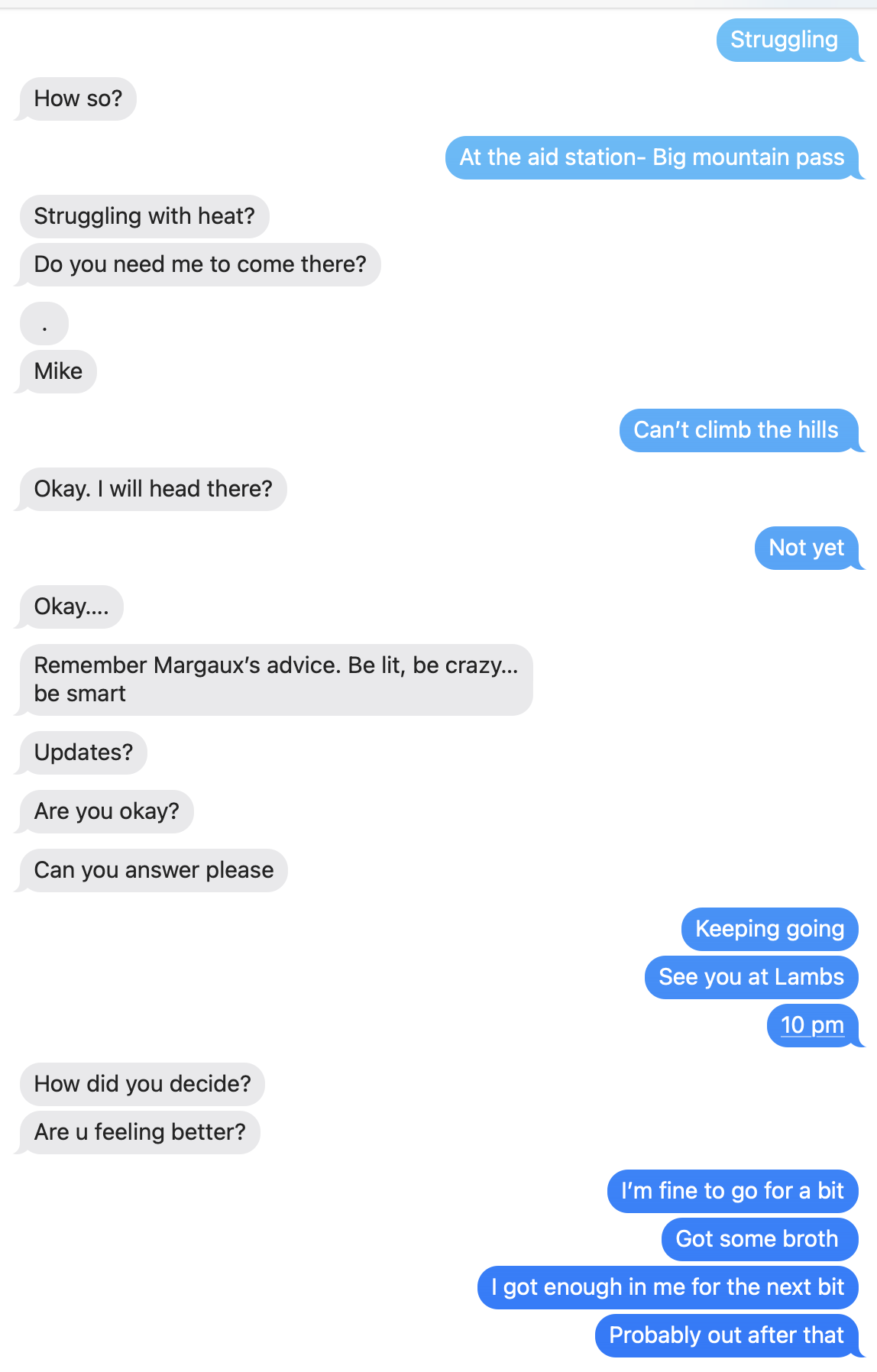
I was able to find my groove for a bit as I climbed out of Big Mountain Pass aid station. It was slow but there were other folks around. I ran into some hill-billyish bow hunters coming down. One of them said, “You all are bad asses!”
I saw another bow hunter up the trail. I asked him what he was hunting. He said, “Elk!”
I told him we runners are scaring them off.
I found it easy to run on the downhills. But I was still kinda dehydrated. It takes a lot of water to recover from that. The ice water was nice because it was so soothing to the body. But I found that going pee was still kinda unpleasant. So I wasn’t fully hydrated yet.
I also found the climbs less taxing. That’s when it dawned on me that climbing at 7600 feet was much different than climbing at 8600 feet. So all of my belabored breathing on the last section was really due to heading toward 9000 feet. That made me feel a little better about my fitness level.
I was still not going very fast. Lots of people passing me over the leg into the Alexander aid station. But my average pace was not horrible. A little over 20 minutes per mile. That’s still on pace to finish before the 36-hour cutoff. Finishing was possible!
But I had pretty much made up my mind. I was out. I didn’t want this race.
Gary Cantrell, aka Laz Lake, once said this about running ultras:
In any of the endurance events, you really have to have two things in your mind. One is that you’re focused on finishing. You can’t do any 100-miler and say, “I’m going to run 50 miles and then evaluate,” because that can save you a lot of trouble if 50 miles, you’re going to decide to stop. At the same time, you have to live in the moment. You can’t think about how much is ahead of you because your mind just can’t wrap itself around all of it at once.
I don’t think I wanted to finish this race. From the moment I got into the Wasatch 100 to the trip to the hospital the week before the race. My mind and body didn’t have that drive to finish. You have to want 100 miles. And you have to want the race in front of you.
I wanted the Bighorn 100. I wanted the Superior 100. I had years of wanting those races before I even started training. I can’t say that about the Wasatch 100. I liked the idea of the race. I liked that it was old school and one of the original 100 milers in the US. But I didn’t want it.
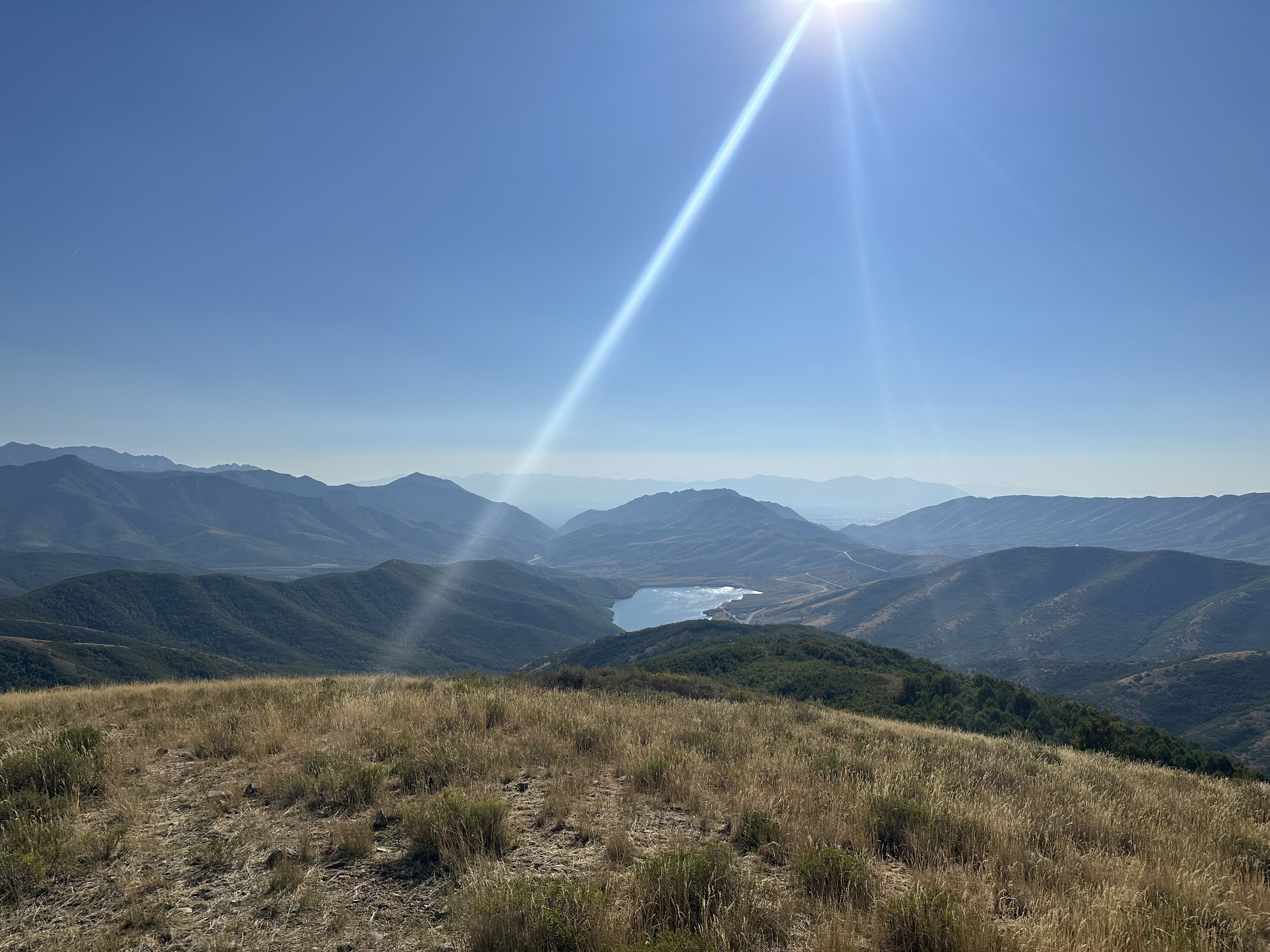
Making my way into the Alexander aid station took forever. I arrived at 7:15. Sat down and took my pack off. Then walked over to the checkout table and said, “I’m gonna drop.”
They had me fill out a form and sign it. First time I’ve done that at a race! The guy said, “Yup, all it took was one guy many years ago who said, ‘Wait, I didn’t drop out. I kept going.’ and now we have people sign this thing.”
I found out there were 10 runners behind me. The staff was all very encouraging to keep folks going. They said everyone had plenty of time. When it the sun sets and it’s cooler, folks find a second wind. That wasn’t me today. I had made up my mind.
I texted Heather to come get me. Then I sat and waited while watching the sun set.
Heather picked me up and we drove back to Park City. It was over. I was ok with that.
I cleaned up back in Park City with a bath and a long shower. It’s always a luxury to sleep back in your bed instead of being on the trails.
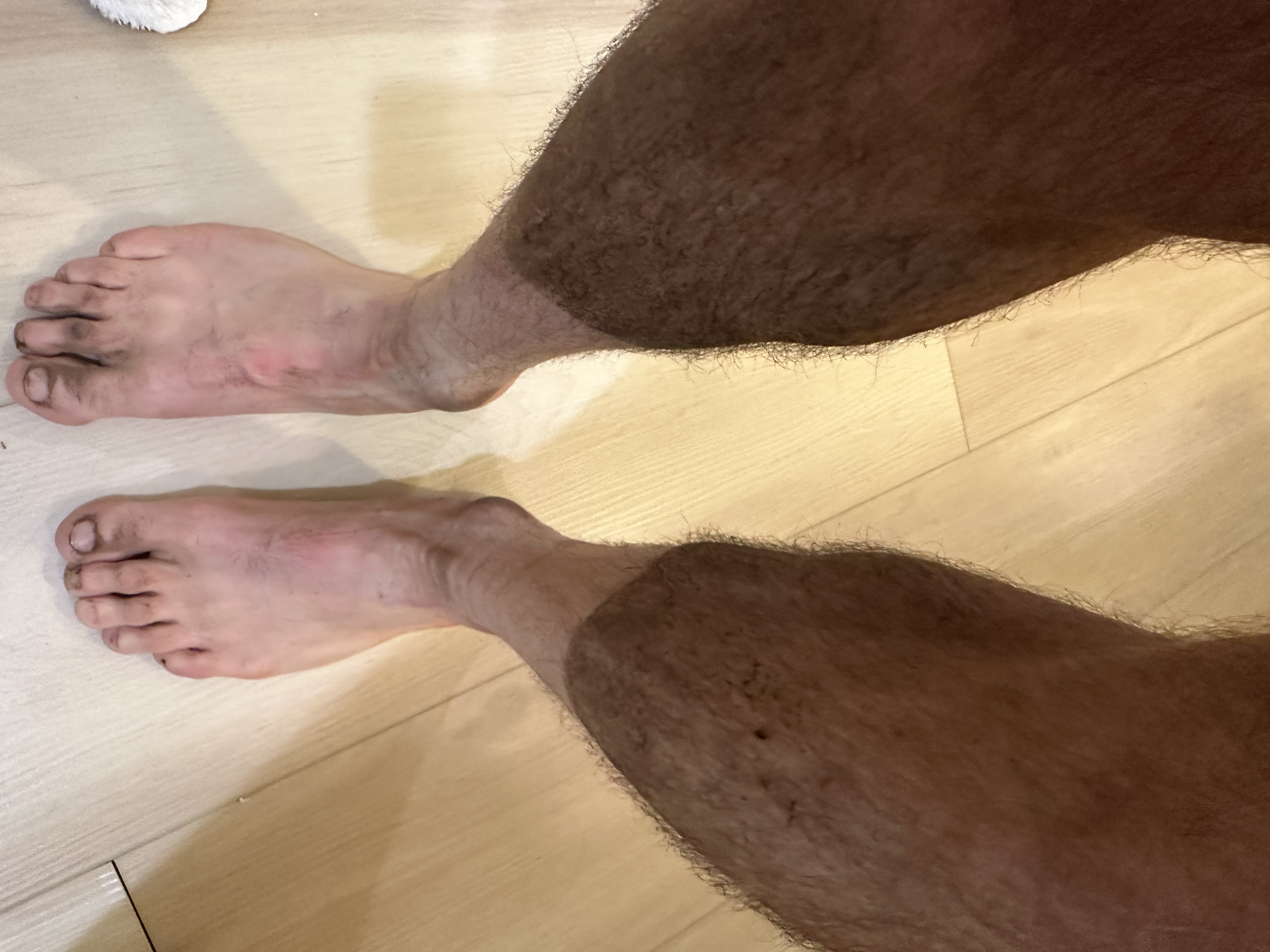
As usual, I woke up many times through the night. My body and nervous system amped up from 14 hours on the trails. At one point in the middle of the night I got up to use the bathroom. In a haze of trying to find it ran into the door chain lock on the wall and split my eyebrow open. It was bleeding.
I put a band-aid on it. Then I sat on the bed and cried. Not because my eye hurt. But because I was out. I had failed. Even as I type this now, two days later, I can feel the sadness and disappointment welling up.
On Saturday we got up to go hiking near Sundance. It was a beautiful sunny day. A day I was glad I wasn’t out there baking in the sun trying to finish. The hike was a nice distraction. And it occupied the time before we went to the finish line at Soldiers Hollow to pick up my drop bags.
We got some ice cream and burgers in Heber City after the hike. Then headed to the finish line. It was about 3:30 pm. The finish cutoff was at 5 pm. We were close to the golden hour! That’s the hour in an ultramarathon when the cutoff is coming and the cheering is just as loud as it is for the first place finishers. Deadlines can be drivers.
I thought I’d enjoy the energy of the Wasatch 100 finish. When I went to the Bighorn 100 finish in June with my son, Luke, I loved seeing the last set of finishers drag themselves to the line. So much emotion and effort and elation.
I was wrong. The Wasatch 100 finish line felt horrible. Like I was a loser. Similar to when I DNFed at the Bighorn 100 in 2022. I was sad. My mistakes staring back at me. I saw the Wasatch 100 finishers walking towards the finish through the hot sun and I thought, “I still want that.”
The “that” is intangible. It’s not a Wasatch 100 finish. Right now I don’t feel the need for redemption like I did when I DNFed at Superior and Bighorn. But I want that completion. That “doing hard things” feeling. The Open Split Times organization, which collects ultra race times, has this as part of their mission statement:
Endurance events change people. They create hard challenges in a soft world. They bring us together when our natural inclination might be to wander alone. They help us feel the simple joys of food, warmth, and rest by exposing us to cold, hunger, and discomfort. They help us realize how much more is buried within when we seem empty and dry.
As I sit here on Monday after the race I think about how I feel fine. My legs are not spent. I did 14 miles on Sunday with no problem. I could have found more “buried within”.
There’s little point in attempting things that guarantee success. Erling Kagge, a polar explorer, writes in his book “Philosophy for Polar Explorers”:
Life is by it’s nature a constant stream of failures, small and large. I don’t see mistakes and losses as problems in themselves; it’s the way in which I react to them which is decisive. Failure sometimes creates possibilities. And failure is one of the most natural consequences of taking a risk.
I guess my heart wasn’t in this one. It tried to tell me that a week before. But I wouldn’t listen.
I still see new races on the horizon. Maybe even 100 milers. We’ll see!